
19 minute read
Reef Check
AMIDST THE GLOOM, A CONSERVATION SUCCESS STORY THREE YEARS OF REEF CHECK OMAN
BY BIOSPHERE EXPEDITIONS
It has been three years since Reef Check Oman was founded by graduates of Biosphere Expeditions’ placement programme. Run by Omanis for Omanis, the chapter’s goal is to preserve the country’s coral reefs, which are not only beautiful, but also the foundation of local livelihoods, sustainable tourism and traditional ways of life. And it has been doing just that.
In the past three years, Reef Check Oman has achieved several historic milestones: it conducted the first-ever community-based reef survey near the capital Muscat in early 2017. Later that year, Oman’s first two Reef Check EcoDiver Trainers took on a leading role as citizen scientists in the country’s reef conservation efforts. Since then the organisation has delivered presentations at Sultan Qaboos University in Muscat and trained more Omani divers to survey reefs.
Jenan Al Asfoor, the organisation’s founder, says: “In Oman, we are blessed to have a beautiful coastline of over 3,000 km. With this comes a big responsibility of protecting our coral reefs, which sustain the livelihoods of many coastal communities and also brings tourism to our shores. It is up to us as Omanis to do this and Reef Check Oman is there to play its role by empowering divers to help survey and protect our reefs. The more people we have, the better, so I encourage everyone in Oman to join us, whether they are divers or not. If you are a diver, we will teach you how to survey and protect reefs. If you are not, there are many other ways you can help. Just get in touch via our website www.reefcheckoman.org”.
Dr. Matthias Hammer, Executive Director of Biosphere Expeditions, says that he is “delighted to see Reef Check Oman thrive like this. This is exactly what our placement programme seeks to achieve: empowering local people and communities to survey and protect nature in their own backyard. Because intact nature is very often the bedrock for people’s prosperity, well-being and way of life, local people are best placed to do what is needed. I congratulate Jenan Al Asfoor and her compatriots for this very impressive effort.”
For more information, Reef Check Oman is on www.reefcheckoman.org, Facebook and Instagram.
REEF CHECK’S NEW LOOK!
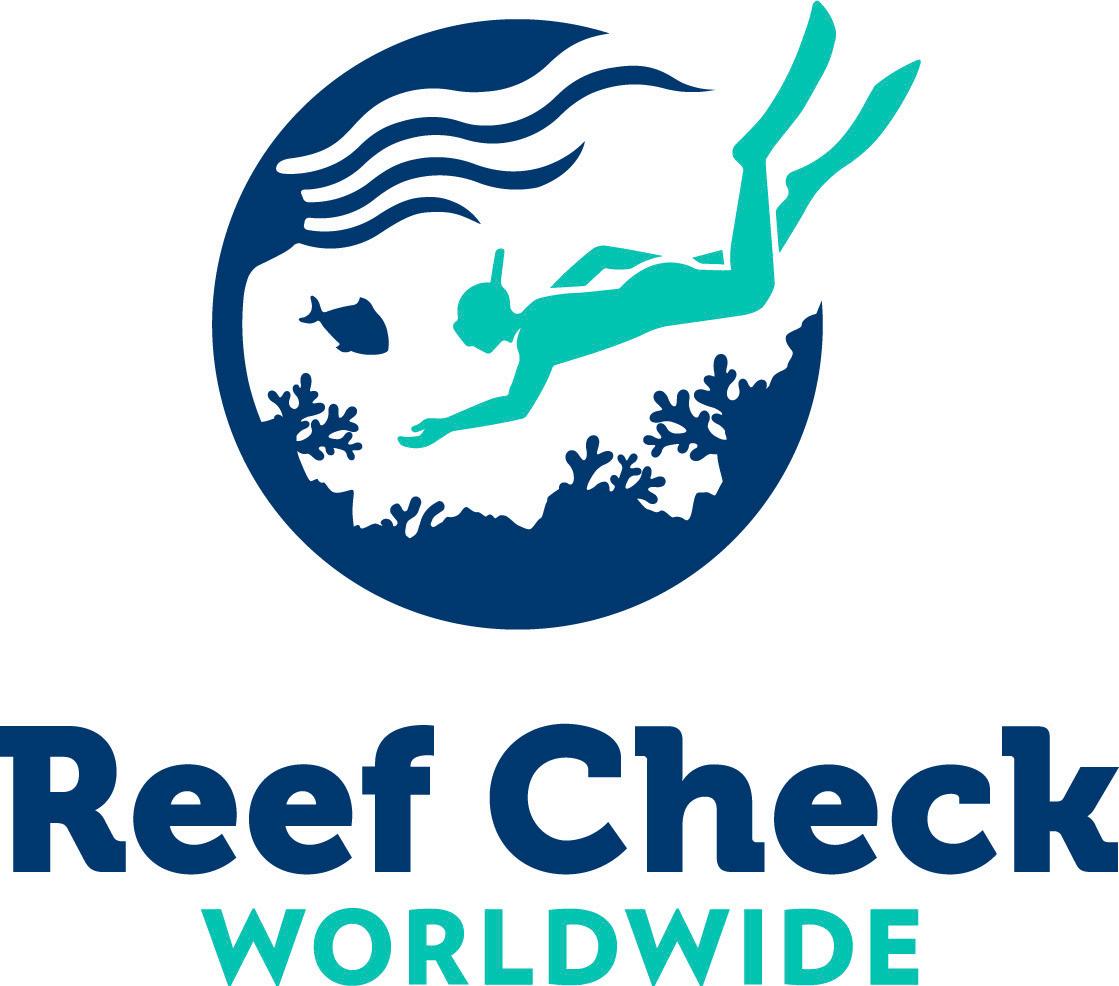
Today, we are proud to present Reef Check’s new logo and website! Our new logo features the key elements of a diver, fish, coral reef and kelp forest and we feel that it is a cohesive representation of what Reef Check stands for: leading citizen scientists to promote stewardship of sustainable reef communities worldwide. Go to: www.reefcheck.org
Since the launch of our California programme in 2005, Reef Check has been dedicated to the conservation of both tropical coral reefs and temperate kelp forests. We are training and leading citizen scientists to study reefs around the globe and develop conservation and restoration solutions to improve the health of reefs and the human communities that depend on them.
We also invite you to check out our online store to pick up some new logo swag!
THE REEF CHECK KOMODO PROJECT IS BORN
BY DIVINE DIVING
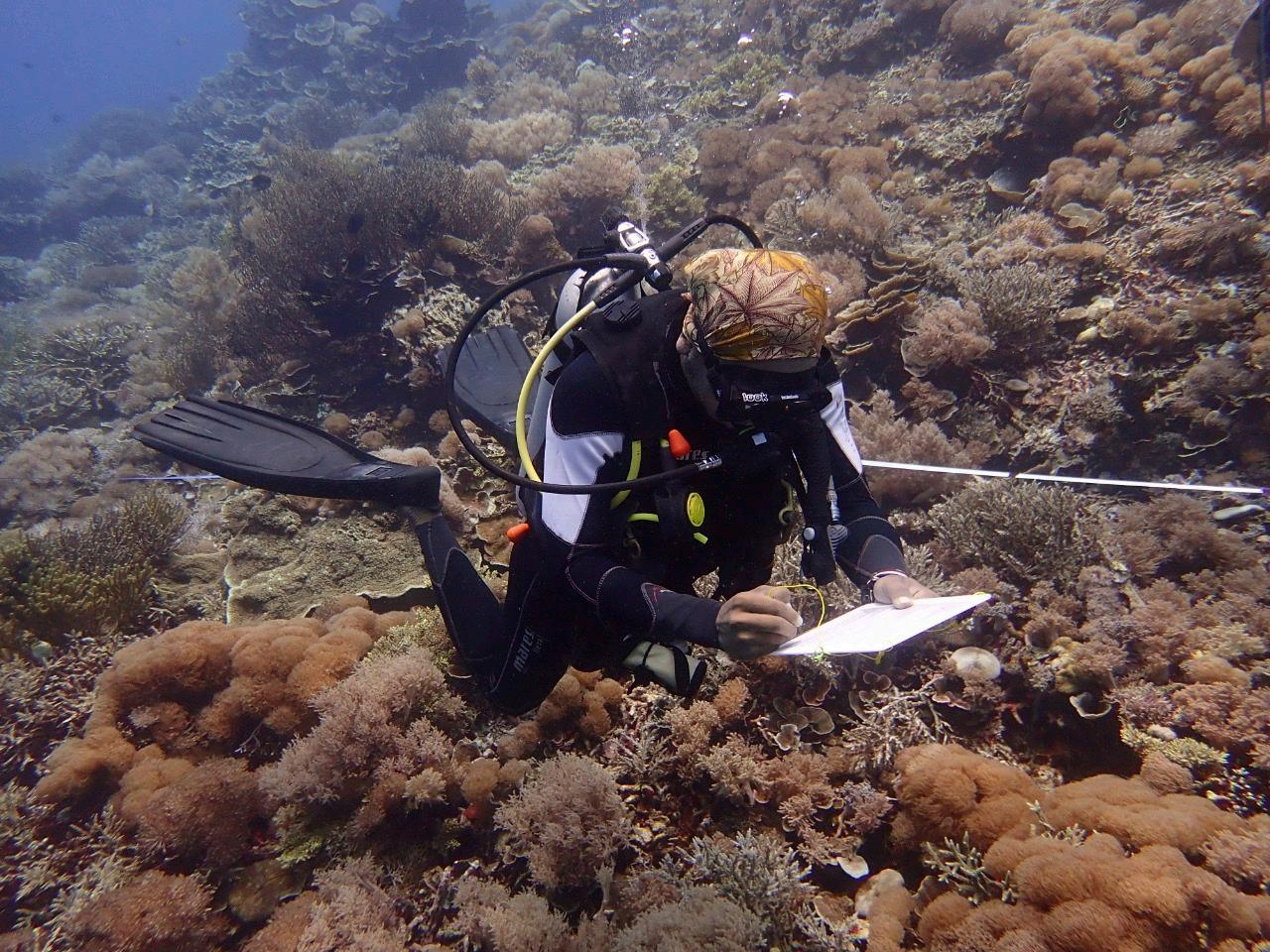
Nestled within the heart of the Coral Triangle is Komodo National Park, a UNESCO World Heritage Site in Indonesia of over 1,700 km2 encompassing 28 islands and some of the most diverse, densely populated marine life on the planet. The area however does not come without its challenges. From the threats of fish stock depletion, tourism impacts and climate change – like so many other coral reefs across the globe – the park and its reefs has been in need of a long-term monitoring programme for many years.
Recently, the management team of the Reef Check EcoDiver Training Facility, Divine Diving in Komodo began piloting a project that has since made history in the country by being the first organisation to have ever been permitted to carry out scientific survey work inside an Indonesian National Park and World Heritage site. Wholly funded by the forward-thinking tourism authority Bandan Otorita Pariwasata (BOP) for Labuan Bajo, this project is allowing the team to facilitate the training of 10 local Indonesians as citizen scientists and Reef Check EcoDivers, present a knowledge-based workshop for locals, and conduct no less than 56 full Reef Check Surveys over 33 unique sites from March to December.
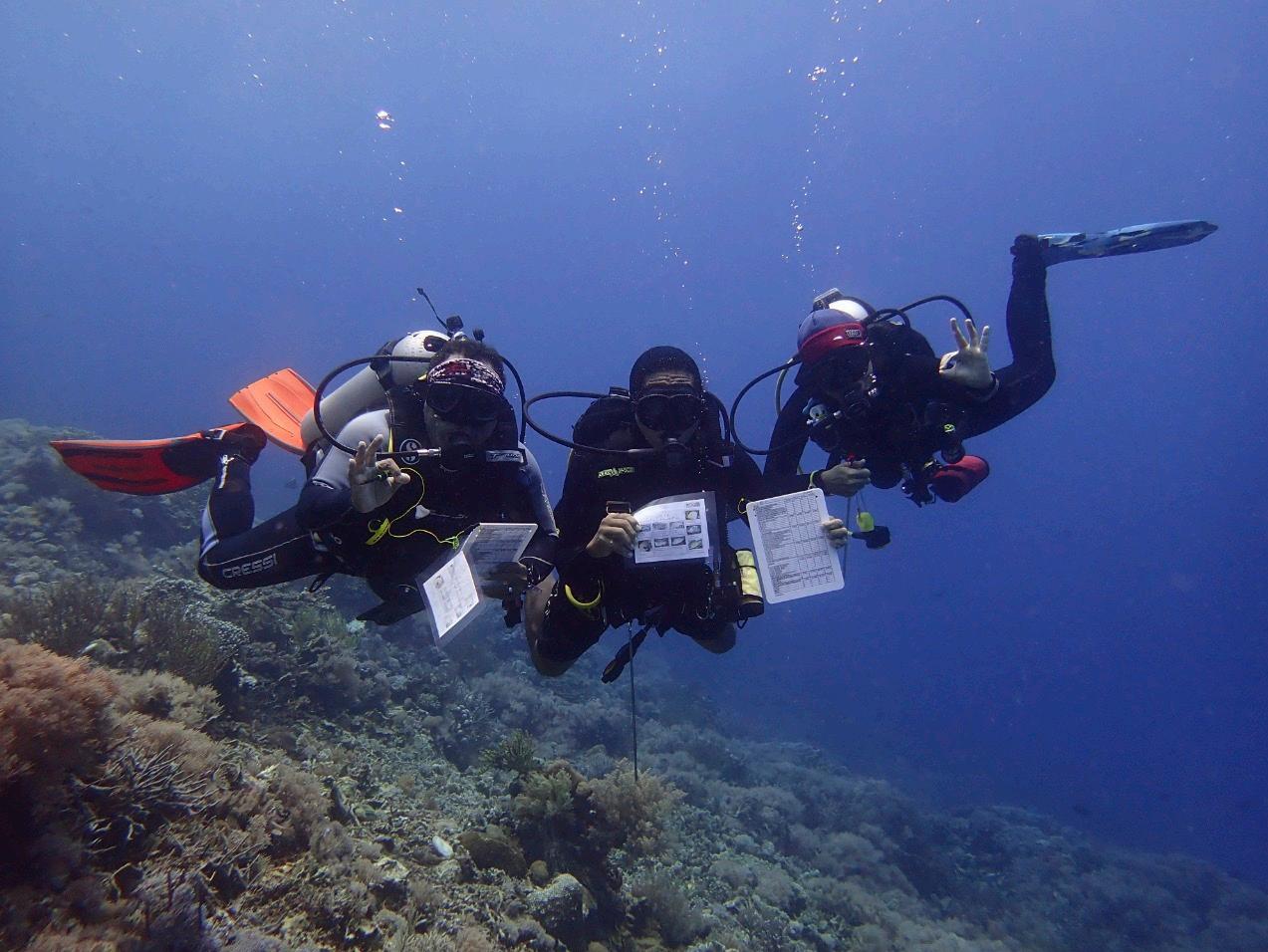
Marij Aben, Director of Divine Diving and Programme Leader for Reef Check Komodo said, “We are incredibly proud to be working alongside both the BOP and National Park Officers, allowing Reef Check to touch the hearts and minds of our local people and to pay-it-forward to Mother Earth.”
REEF CHECK AUSTRALIA’S 2019-2020 SOUTH EAST QUEENSLAND SEASON SUMMARY REPORT IS OUT
BY REEF CHECK AUSTRALIA
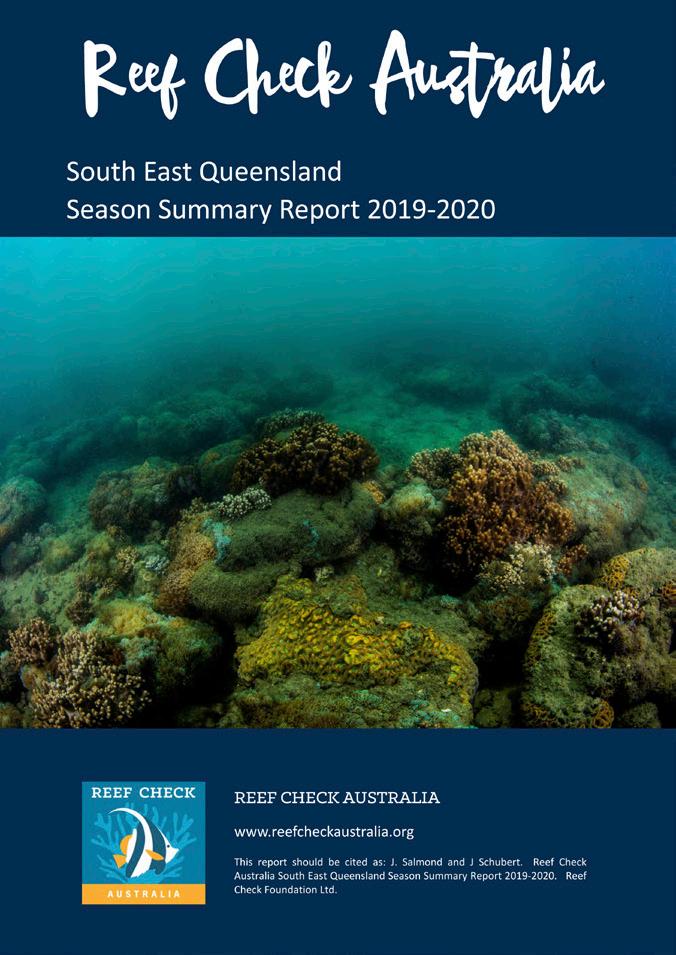
Despite delays caused by unfavourable weather conditions and the pandemic, Reef Check Australia’s (RCA) awesome volunteers still managed to wrap up the 2019-2020 South East Queensland survey season on time. Over the season, RCA monitored 40 different locations on 20 different reefs, stretching from Mudjimba to Palm Beach, covering 16,800 m2 of reef habitat and collecting over 7,000 pieces of data. Not surprisingly, given that the area has rocky reefs, the most recorded substrate type was rock, but hard coral came in at 13%. Hard and soft coral cover remained relatively stable across the survey area and coral bleaching was observed on fewer sites this season, but was slightly higher on average than last season.
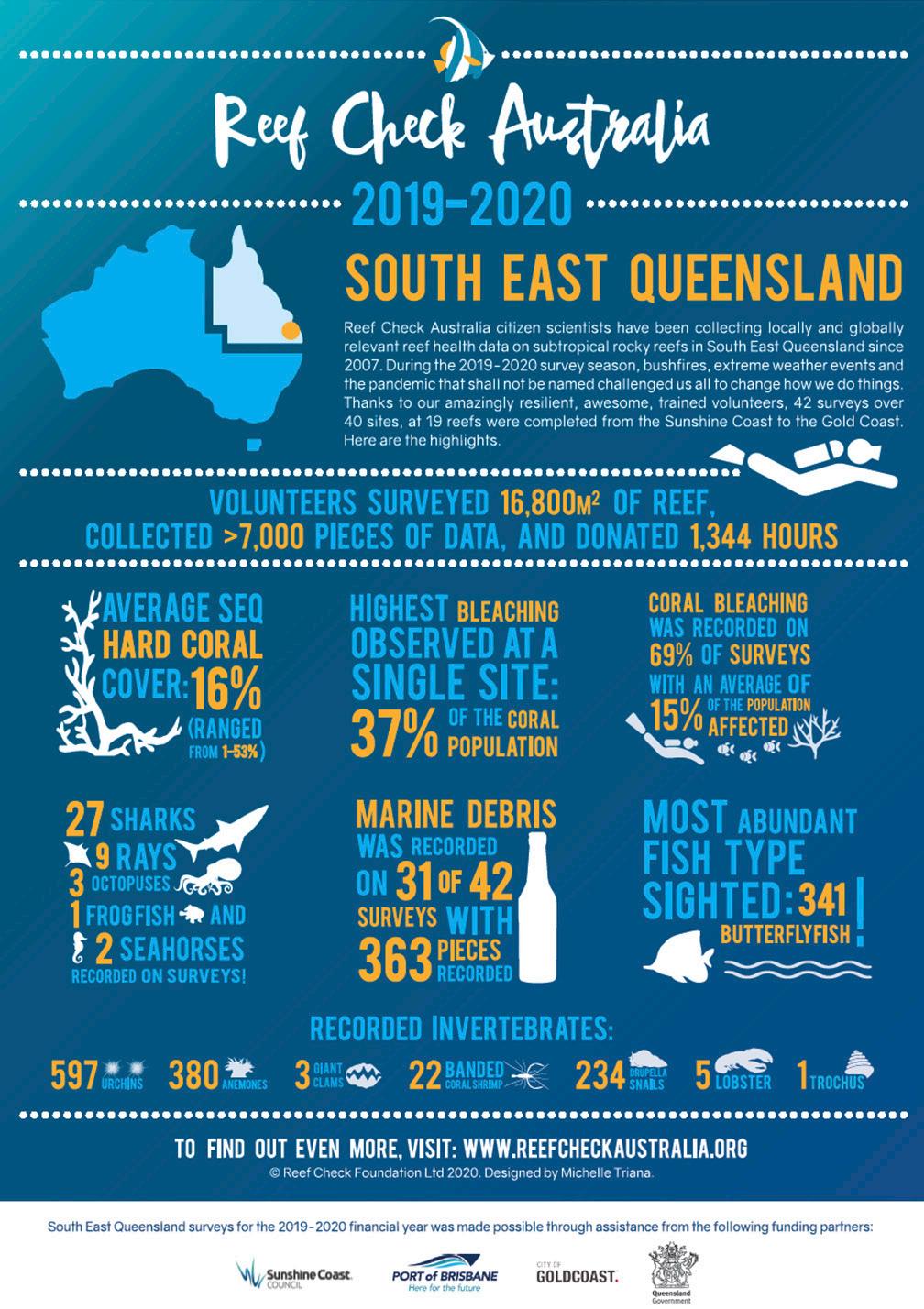
This project is supported by Reef Check Australia, through funding from the City of Gold Coast, Queensland Government Community Sustainability Action Grant, Port of Brisbane, and the Sunshine Coast Council.
FROM ALASKA TO BAJA: COOPERATIVE RESEARCH EFFORT DOCUMENTS KELP MIGRATION

In a sweeping display of the power of community-based science to show the oceanwide changes caused by warming waters, researchers from universities and organisations around the globe teamed up to demonstrate northward migration in kelp forests. Their latest paper was recently published in Global Change Biology.
Participating partners spanned from Mexico to Alaska, and included University of Alaska, Reef Check California, Stanford University, University of California – Santa Cruz, San Diego State University, Monterey Bay Aquarium Research Institute, NOAA, and Moss Landing Marine Laboratories in the United States, and Comunidad y Biodiversidad A.C., Universidad Autónoma de Baja California and fisher communities in Mexico.
One of the senior authors of this work, Dr. C. Brock Woodson (University of Georgia), described the project as a unique approach to monitoring some of the broad-scale changes happening to ecosystems around the globe.
“Thanks to a standard monitoring programme that spans oceans, years, and many collaborative efforts, we could look at an entire system and gain unique insights,” Woodson said. “If we had studied just individual areas, we never would’ve been able to draw the same conclusions about how kelp forests are changing.”
The partners hope that this project can serve as a model to researchers for how to harness the power of cooperation and volunteerdriven data.
They owe much of their success to PISCO, the Partnership for the Interdisciplinary Studies of Coastal Oceans, the organisation that developed the initial monitoring programme in California and Oregon in 1999, as well as Reef Check of California, Comunidad y Biodiversidad and MexCal that expanded this monitoring protocol through citizen science programmes. By using similar monitoring guidelines across different programmes and groups, the project was able to combine their results to develop a picture of what was happening to kelp forests in different regions.
Each region had a different type of volunteer diver collecting the information from undergraduate students and recreational divers in California, to women from fisher communities called “Las Sirenas del Mar” at Isla Natividad in Mexico. Las Sirenas del Mar were trained as divers and have been active participants in the underwater communitybased monitoring programme.
“The involvement of Las Sirenas del Mar is a relevant example of the power of communitybased monitoring, and a small step forward for gender equality in the sea,” said lead author, Dr. Rodrigo Beas, from Universidad de Autonoma de Baja California.
Reef Check California citizen scientist divers contributed data collected from many sites for over a decade of monitoring. Dr. Jan Freiwald, co-author and Executive Director of the Reef Check Foundation, thanked the volunteers. “Including the data collected by our citizen scientists in publications like this that evaluate ecosystem changes over large spatial and temporal scales demonstrates the value of their work in understanding the impacts of climate change on our oceans,” he stated.
The changes described in this paper could wreak ecological and economic havoc on the communities – both marine and human – that depend on the kelp to survive.
“Think about what would happen if you took the trees out of a forest: it’d be a meadow. There might still be life there, but it wouldn’t look anything like the ecosystem that lived in the forest. Kelp are the trees of the oceanic forest,” Woodson explained.
Dr. Rodrigo Beas also likened the kelp to trees within a forest. “This underwater forest is as complex and productive as a tropical rain forest” Beas stated.
“It’s an incredible world down there. Like being in a forest, except that you’re able to fly up into the canopy to see all the life happening at different levels among the trees. Sometimes it can get very dark and moody. It’s beautiful,” Beas said.
By analysing the data from each separate group and area as a whole, the researchers were able to clearly see an ocean-wide trend: kelp is migrating northward. The researchers also noticed that as the kelp migrates, only the species that eat it directly appear to migrate with it. This leaves a broken food web behind.
Senior author Dr. Fiorenza Micheli, from Stanford University, stressed the need to ramp up action, “we documented major, region-wide changes in these productive coastal ecosystems in response to recent heat waves. Impacts are greatest in the northern and southern portions of this region, highlighting the urgency of protecting these vital ecosystems, sustaining livelihoods and ensuring food security for coastal communities.”
“This may not sound like good news,” said Beas, “But there are hopeful elements to this story. We successfully enacted a project that spanned years and oceans with multiple partners, and used it to gain insight into an ocean-wide trend. That is very hopeful. And we hope that others will be able to use our project as a model for how to measure broadscale change in the world.”
“This is an excellent example of collaboration between researchers, communities and civil society organisations in the USA and Mexico to understand how climate change will impact the kelp forest and therefore fisheries and coastal communities in the next 30 years. This can help us to start making the needed changes so the coastal communities can adapt and maintain the ecosystem resilience,” concluded Jorge Torre from COBI.
REEF CHECK CALIFORNIA’S NORTH COAST KELP FOREST RESTORATION PROJECT BEGINS
BY TRISTIN MCHUGH, REEF CHECK CALIFORNIA NORTH COAST MANAGER

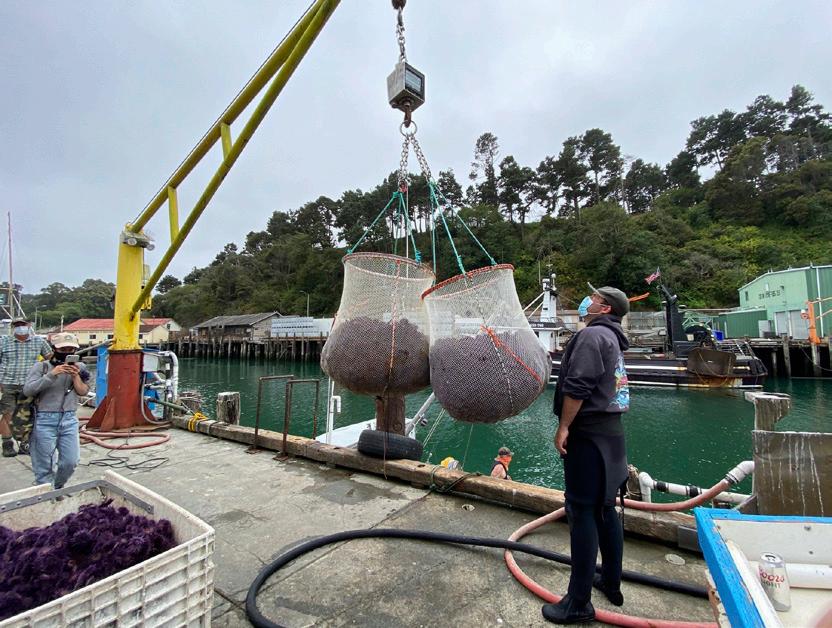
Reef Check California’s North Coast Kelp Forest Restoration project has begun! Since 2014, bull kelp in northern California, primarily along the Sonoma and Mendocino county coastline, has declined more than 90% due to a combination of extreme warm water events and multiple ecological stressors, including significant increases in purple sea urchin populations, which feed upon the kelp. This has led to a large-scale shift from bull kelp forests to urchin barrens across most of the region. This shift has caused significant losses of kelp forest biodiversity and ecosystem services, resulting in the collapse of the North Coast commercial red urchin fishery ($3 Million ex-vessel value) beginning in 2015 and the closure of the recreational red abalone fishery (estimated at $44 Million non-market value) in 2018.
Earlier this month, Reef Check and partners began to remove purple urchins (Strongylocentrotus purpuratus) from a restoration area in North Noyo Harbor, Fort Bragg (Caspar Cove is the next site this effort will target). The goal of this collaborative project is to ultimately catalyse a phase shift from urchin barren to kelp forest on targeted reefs. Furthermore, we are assessing if purple urchin densities can be reduced and maintained over time to allow kelp to grow and serve as a kelp oasis, providing spores (kelp seeds) to surrounding areas. This project will play a vital role in determining how resource managers choose to move forward with kelp restoration strategies statewide, thus helping to evaluate the costs and benefits of human intervention in a dynamic oceanic environment.
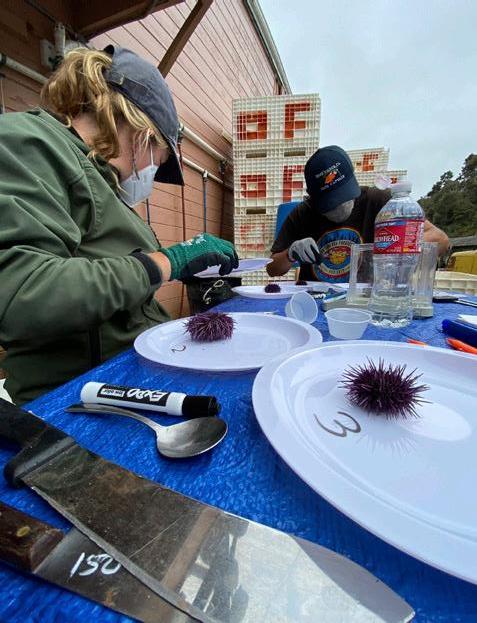
Prior to urchin removal efforts, Reef Check divers collected ecosystem information (such as fish, invertebrate and algae densities) to get a picture of what reefs looked like at the time at which restoration began in areas to be restored and in other areas that will not be touched. Following the removal of urchin, Reef Check divers will conduct quality control surveys to assess the effectiveness of the effort and ecosystem surveys to compare reefs before and after restoration with reefs that will not be restored. Making these comparisons will allow us to evaluate the outcome of the restoration efforts. This provides Reef Check and managers with the information necessary to help guide where resources and urchin removal efforts are most needed and effective.
After urchins are removed from the restoration area, they are taken back to Noyo Harbor where Reef Check staff and volunteers further process the urchins and measure a number things such as weight and size of urchins and bycatch to better understand the methods used to remove urchin and also investigate the biology of the urchin occupying the reef. Stay tuned in the coming year as we further develop this programme (Funding Source: Ocean Protection Council).
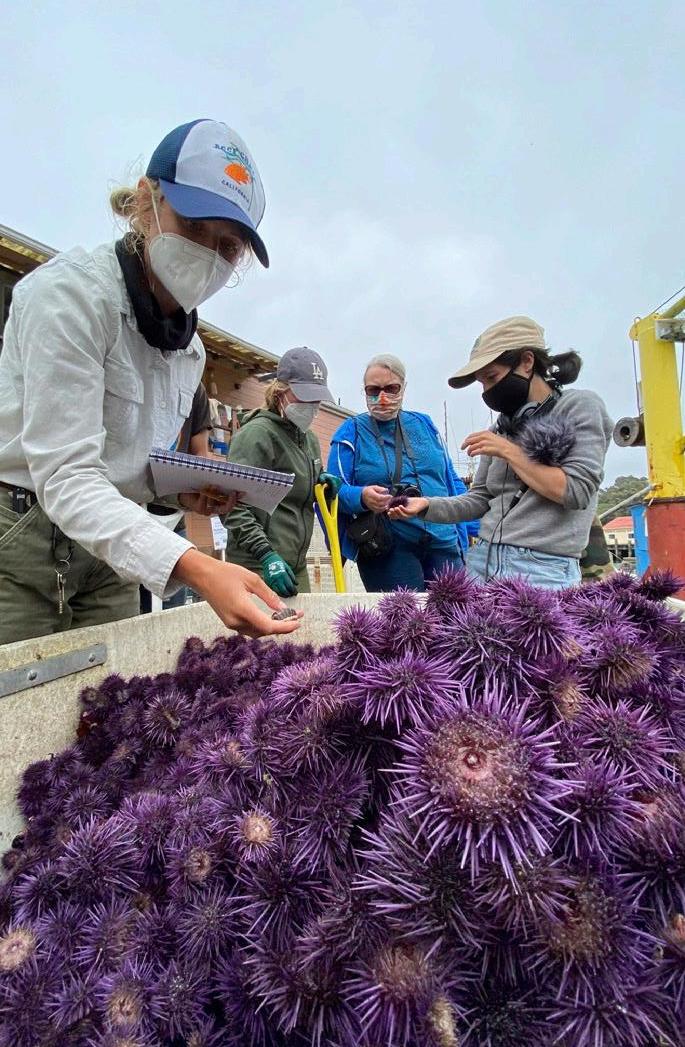
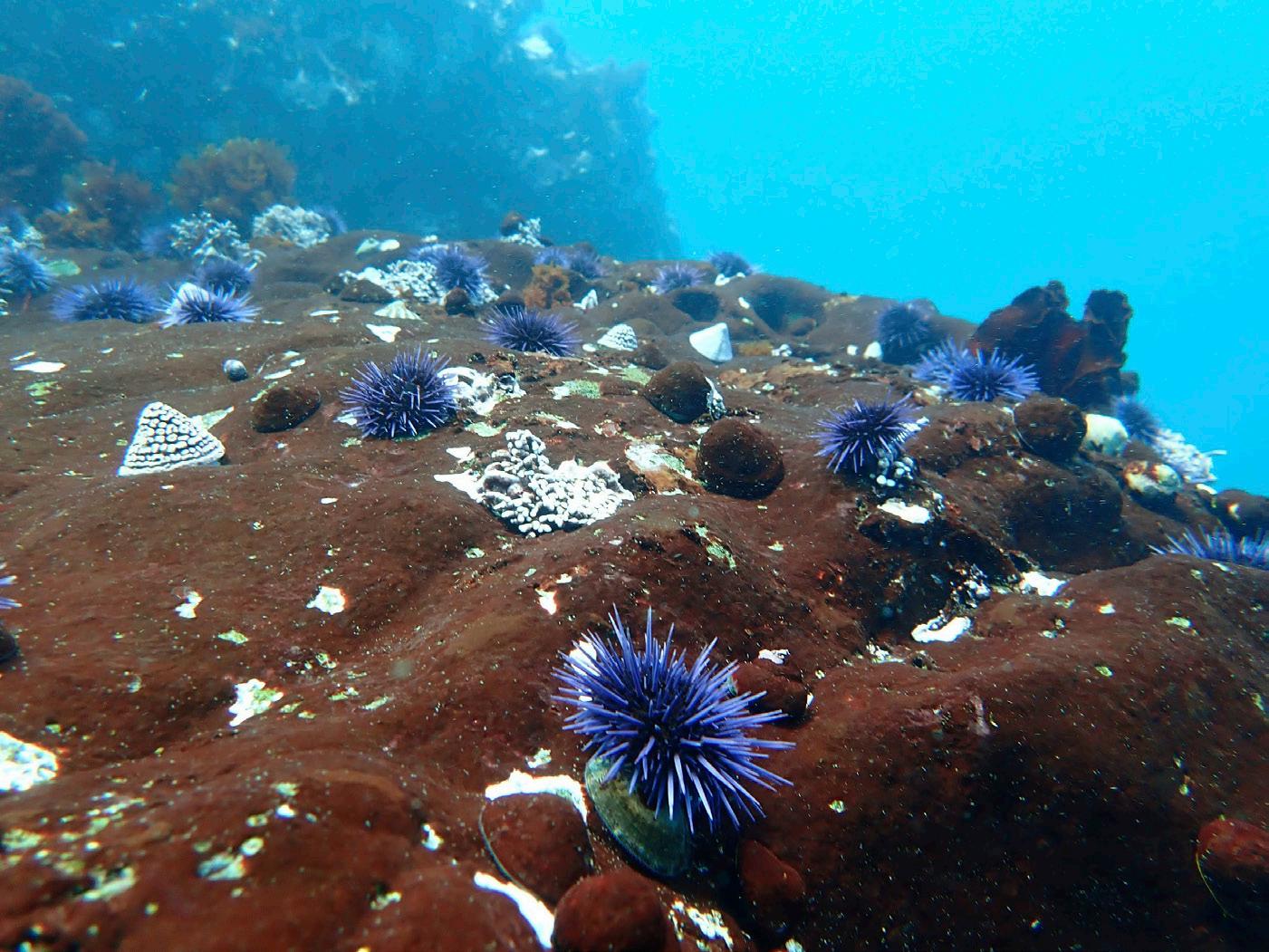
MANTANANI – SUSTAINABLE ISLANDS IN THE SUN
BY REEF CHECK MALAYSIA
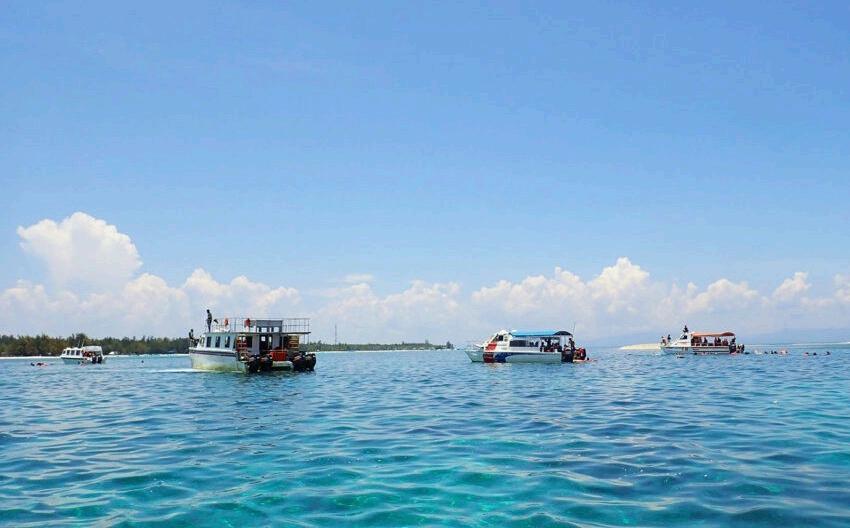
For years now, mass tourism has been impacting the environmental health of coral islands off Sabah’s west coast. Among them is the Mantanani three-island group, located off the northwestern tip of Borneo. There are far fewer tourists now as the pandemic stifles travel. Some islanders are using the lull to try new businesses and better manage their environment.
BAD PRACTICES Mantanani is set in shallow azure waters fringed by coral reefs. It is home to a 1,000-strong Bajau Ubian community who are traditionally fishermen, but as far back as a decade ago, overfishing and fish-bombing has degraded the islands’ marine ecosystem, according to Adzmin Fatta, the island-based programme manager of Reef Check Malaysia.
As a result, “fishing was no longer providing sufficient income for the island’s households,” he said. A 2013 survey showed that nearly two thirds (of households) were earning below RM 500 per month.
“At around the same time, tourists started visiting Mantanani. The islands became so popular that visitor numbers rose from 50 daytrippers in 2011 to 3,000 day-trippers last year”, said Adzmin. The majority are day-trippers from China, followed by South Koreans.
At the peak of the tourist season, the blue waters, especially around the 3 km2 main island, were covered with bobbing bodies of snorkellers overlooked by rows of speedboats. The tourist boom prompted the islands’ fisherfolk to switch to running boats for holiday-makers, operating homestays and selling handicrafts. By last year, around 80% of the islanders were earning incomes from tourism. About half of this group developed their tourism skills with the help of Reef Check’s Cintai Mantanani conservation programme, whose objective is sustainable tourism.
BUILDING BUSINESSES Mainah bunt Maulana is one of the eight local women who approached Reef Check to build their homestay programmes. Last year, after 12 months of training in tourism skills, they earned RM 50,000 – their first homestay income in five years.
“After we got help, our earnings rose straight away,” said Mainah with pride. She is now the homestay coordinator for the group. In fact, this year, despite the Movement Control Order (MCO), shuffling tourist arrivals over three months, has already raked in RM 19,000. Things were bad when the pandemic first shut tourism down in March though.
“During the MCO, all my bookings were cancelled,” said Mainah. “We were fully booked for March and April. I was really sad. My children lost their jobs in the resorts. So we fished in the nearby waters. We only ate rice and fish every day.”
Worried that fishing would become “unsustainable if the entire community returned to it,” Adzmin said Reef Check organised food aid, for which Mainah, for one, was grateful. In fact, this continued support from Reef Check has also prompted her to sign up for the NGO’s post-MCO pilot project to diversify incomes.
The so-called economic recovery project aims to overcome the heavy dependency on either tourism or fishing by developing community agricultural, virgin coconut oil production and abalone farming. Mainah is participating in the coconut component. “I really want to learn how to make the oil, where to market it… It will help generate income.”
BUILDING RESILIENCE Funded by Yayasan Hasanah, the 18-monthlong project also has buy-ins from another 17 villagers, including several who have never participated in the Reef Check programmes before. Adzmin admitted that it was a difficult project to implement, but they are getting help from experienced partners such as a commercial coconut virgin oil producer.
With an eye on the impact of these introduced livelihoods, Adzmin said, “we’re keeping it smallscale, tapping into existing resources like the many coconut trees that are already growing on the island, and wild abalone with which we will be doing in-situ farming in the sea. The community farming is for food security.
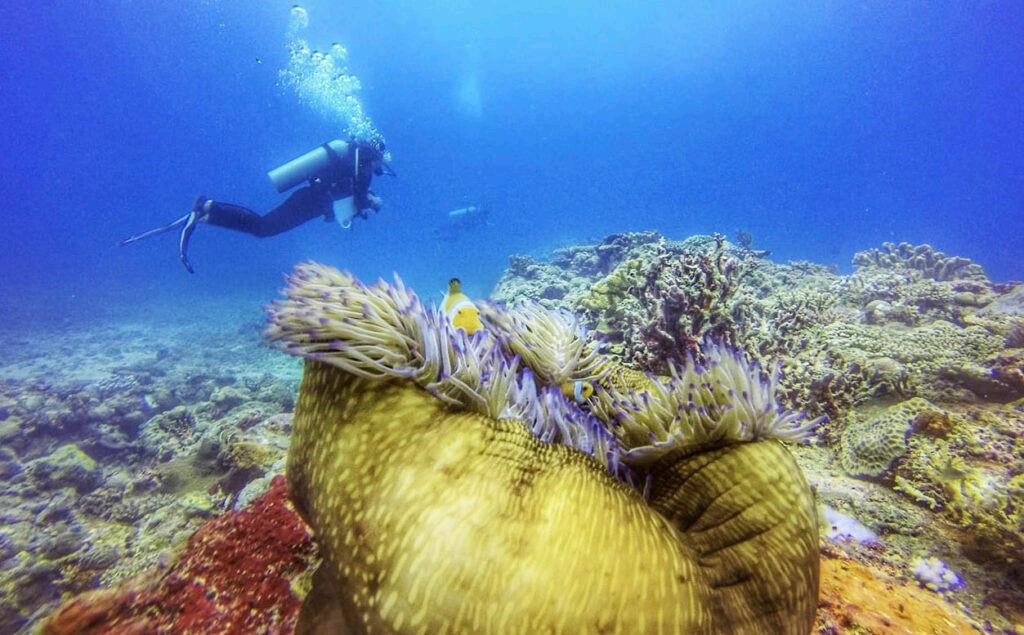
“Tourism has not been sidelined”, said Adzmin. “We are improving the facilities of homestays, training more guides and putting together activities and packages – all to encourage tourists to stay longer. By the time tourism recovers, say in two years, all services and facilities will be in place.”
TOURISM AND CONSERVATION Where the marine ecosystem is concerned, tourism has had both positive and negative impacts, according to Reef Check surveys.
“On one hand, the devastating activity of fish bombing has reduced (around 2,000 incidents in 2015 to 200 in 2018) and the population of fish and other sea life has started replenishing”, said Adzmin. “On the other hand, with so many tourists (pre-MCO), waste is directly discarded to the sea and polluting reefs. Unsustainable practices in diving and snorkelling activities also contribute to the destruction of reefs, such as divers kicking and breaking corals, animal harassment and fish feeding.”
OVER-EXPLOITATION In addition, the locals had been prompted to return to less sustainable fishing practises to feed the growing number of tourists’ appetites for live seafood. This causes over-exploitation of some commercial reef fish such as groupers and invertebrates such as lobsters and abalone. Now, as international borders remain closed, the smaller number of domestic tourists has relieved the stress on the environment.
SUSTAINABLE MANAGEMENT However, better tourist management is needed, and is indeed in the offing, with the announcement of Mantanani becoming a state park by 2023.
Adzmin said Reef Check and the community are working with Sabah Parks towards a longterm sustainable management of the area. The goal is for Mantanani to be jointly managed by the community and the government so that the locals are empowered, tourism can be run responsibly and the environment is cared for. Where the bigger picture of ecotourism is concerned, Sabah is already a frontrunner in Malaysia, stated tourism academic-practitioner Prof Dr Amran Hamzah from Universiti Teknologi Malaysia.
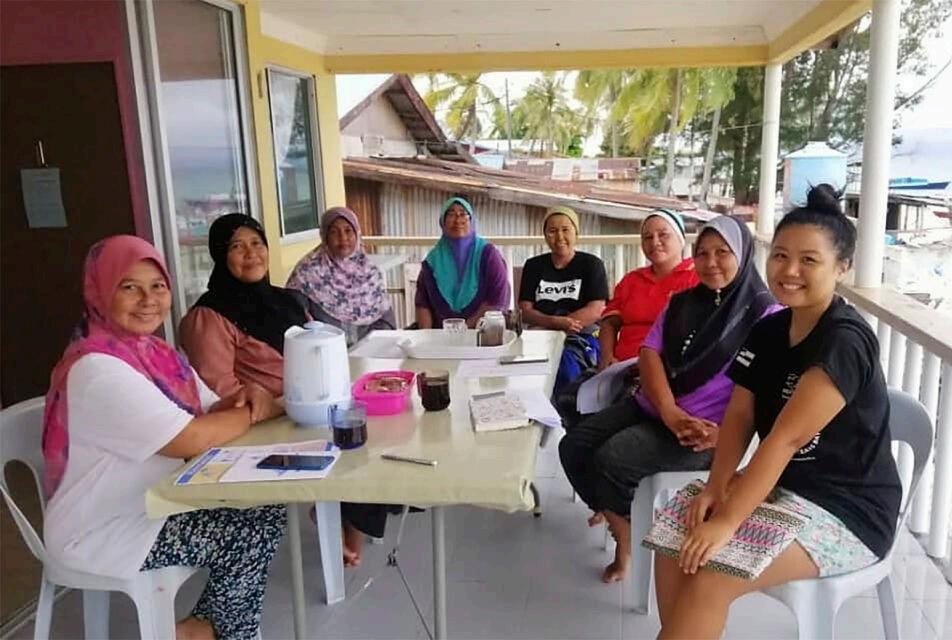
“I would say that Sabah is deserving of its status as premier ecotourism destination in the country, not only in terms of price, but service quality, interpretation, and storytelling.” However, he is disappointed that the state’s industry are going for what he calls “a high volume/low yield business model”.
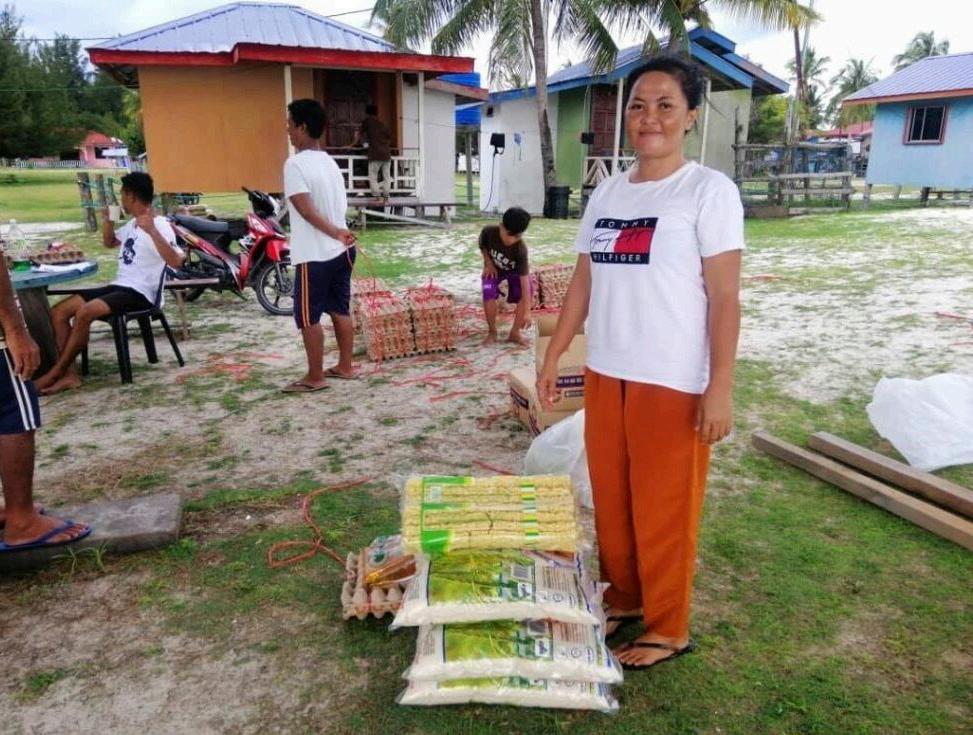
ALREADY A LEADER As the lead consultant of Malaysia’s National Ecotourism Plan 2016-2025, Amran has had numerous engagements with the Sabah tourism agencies and industry players, “which were always enlightening”. He said Sabah was in a prime position to capitalise on its premier label. Besides enhancing interpretation, storytelling and service quality, the state could also build on innovative product developments, embrace IT and provide certifications.
“Discerning tourists would not mind paying a premium for a unique and memorable tourist experience,” he said. “But price undercutting, ‘zero cost tours’, illegal guides etc. have impeded Sabah’s tourism industry from moving up the value chain.” On the whole, mass tourism does not work in protected areas, agreed Surin Suksuwan, a member of the IUCN World Commission on Protected Areas.

“There is conflict between having a lot of people present and maintaining the ecology of the area. But mass tourism might work if it were planned properly to be confined to a very tiny part of a park. You could for example, allocate a very specific spot like a lookout where you could draw people and keep them there to take their selfies. Only a small percentage would actually venture to explore an area in depth. But it might not work in all contexts.”
ECONOMIC INCENTIVE However, it is undeniable that “without tourism, many state governments would have been less interested in gazetting a protected area,” he said. “Chances are, the size of the areas that end up being protected might also have been smaller. Or another site might have been gazetted instead. The reason is the loss of income, for example from timber revenue. If they are not allowed to touch timber, they need alternatives. Tourism is it.”
NEW “VANISHING KELP FORESTS” INFOGRAPHIC AVAILABLE TO DOWNLOAD
A new infographic shares the story of California’s vanishing kelp forests, depicting its shift from lush forests into urchin barrens.
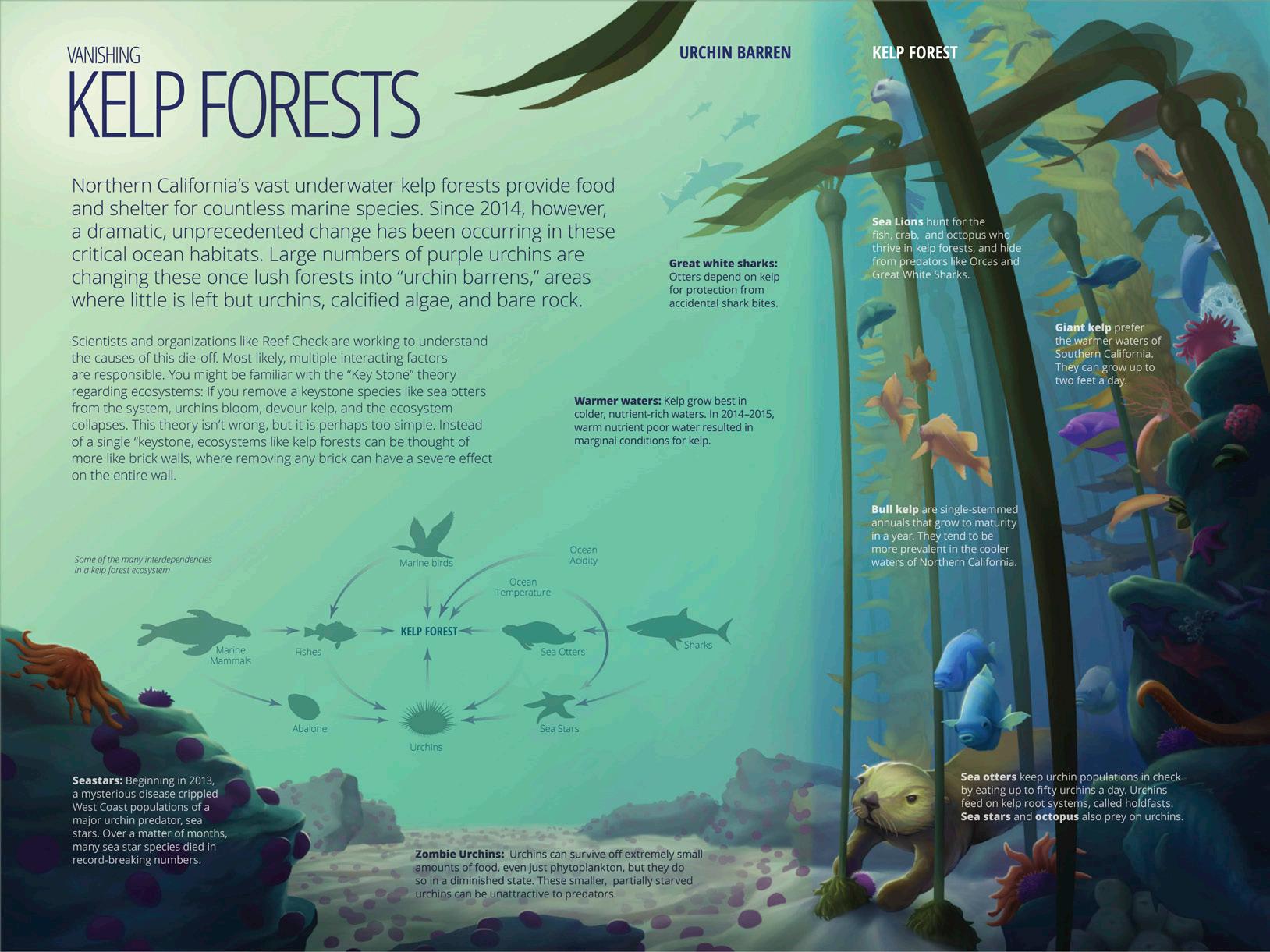
Northern California’s vast underwater kelp forests provide food and shelter for countless marine species. Since 2014, however, a dramatic, unprecedented change has been occurring in these critical ocean habitats. Large numbers of purple urchins are changing these once lush forests into “urchin barrens,” areas where little is left but urchins, calcified algae, and bare rock.
The full-sized file can be viewed and saved here: https://bit.ly/32rolFW










